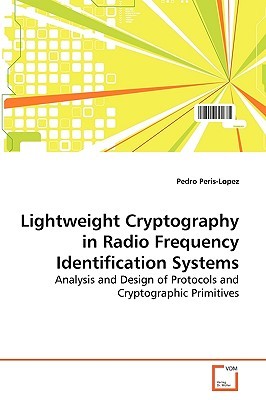
- We will send in 10–14 business days.
- Author: Pedro Peris-Lopez
- Publisher: VDM Verlag
- ISBN-10: 3639108973
- ISBN-13: 9783639108972
- Format: 15.2 x 22.9 x 1.5 cm, softcover
- Language: English
- SAVE -10% with code: EXTRA
Lightweight Cryptography in Radio Frequency Identification Systems (e-book) (used book) | bookbook.eu
Reviews
Description
This thesis examines the security issues of Radio Frequency Identification (RFID) technology. First, we analyze the security of the EPC Class-1 Generation-2 standard. Secondly, we cryptanalyze two new proposals, showing their unsuccessful attempt to increase the security level of the specification. Thirdly, we propose a new protocol resistant to passive attacks and conforming to low-cost RFID tag requirements. Fourthly, we propose a new protocol resistant to both passive and active attacks and suitable for moderate-cost RFID tags. Finally, because this protocol is based on the use of cryptographic primitives and standard cryptographic primitives are not supported, we address the design of lightweight cryptographic primitives. Specifically, we propose a lightweight hash function (Tav-128) and a lightweight Pseudo- Random Number Generator (LAMED and LAMED-EPC).
EXTRA 10 % discount with code: EXTRA
The promotion ends in 18d.10:20:51
The discount code is valid when purchasing from 10 €. Discounts do not stack.
- Author: Pedro Peris-Lopez
- Publisher: VDM Verlag
- ISBN-10: 3639108973
- ISBN-13: 9783639108972
- Format: 15.2 x 22.9 x 1.5 cm, softcover
- Language: English English
This thesis examines the security issues of Radio Frequency Identification (RFID) technology. First, we analyze the security of the EPC Class-1 Generation-2 standard. Secondly, we cryptanalyze two new proposals, showing their unsuccessful attempt to increase the security level of the specification. Thirdly, we propose a new protocol resistant to passive attacks and conforming to low-cost RFID tag requirements. Fourthly, we propose a new protocol resistant to both passive and active attacks and suitable for moderate-cost RFID tags. Finally, because this protocol is based on the use of cryptographic primitives and standard cryptographic primitives are not supported, we address the design of lightweight cryptographic primitives. Specifically, we propose a lightweight hash function (Tav-128) and a lightweight Pseudo- Random Number Generator (LAMED and LAMED-EPC).


Reviews